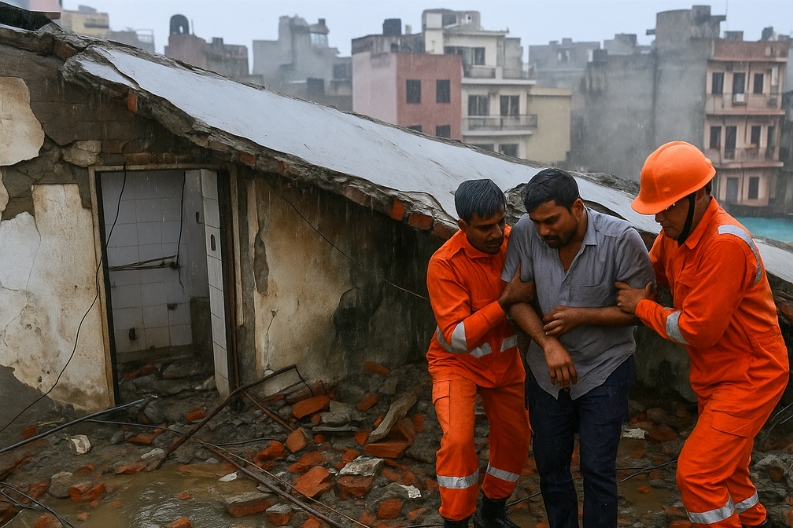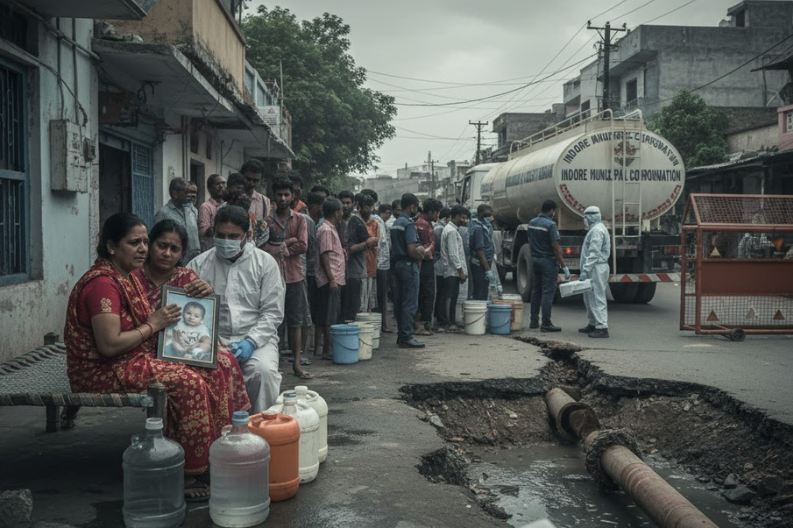On Tuesday, heavy rain caused the roof of a four-storey building to collapse in Siddhatri Enclave, Mohan Garden, Delhi. The incident injured two people, and police quickly confirmed the details. Both victims went to Deen Dayal Upadhyay Hospital for treatment.
Doctors said the injuries were not life-threatening. One victim, Subhash, 30, hurt his left forearm. Both men are now safe and recovering.
The case highlights Delhi’s recurring issue of unsafe buildings, especially during the monsoon season. Across India, rainfall has increased over the decades, raising risks of collapses. Punjab, for example, now sees 45% more monsoon rain compared to the 20th-century average.
Earlier this month, on August 15, a roof collapse killed six people at Dargah Sharif Patte Shah near Humayun’s Tomb. Emergency teams, including the National Disaster Response Force (NDRF), rushed to the scene. They rescued trapped victims, secured the area, and searched for missing people. Authorities later filed a negligence case against unknown individuals linked to the dargah.
The NDRF continues to play a crucial role during disasters. Its teams not only rescue people but also train local responders. This training has grown vital in states like Punjab and Haryana, where extreme weather events occur more often.
Concerns also extend to real estate development. In 2021, Mohali ranked among India’s top emerging investment cities. But frequent rains and safety issues mean that authorities must enforce strict building codes before future growth.
The collapse in Delhi’s Dwarka area stands as a warning. As climate change increases rainfall intensity, officials must act to prevent similar incidents. Stronger safety rules and better construction practices can protect communities and save lives.



